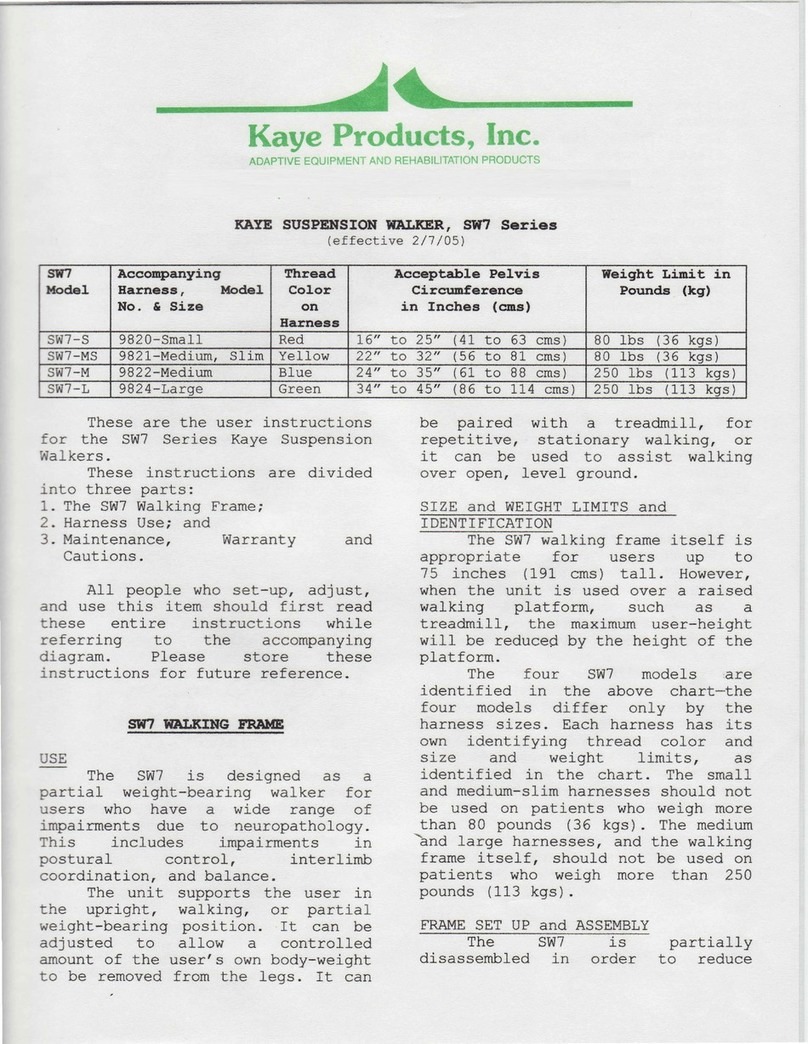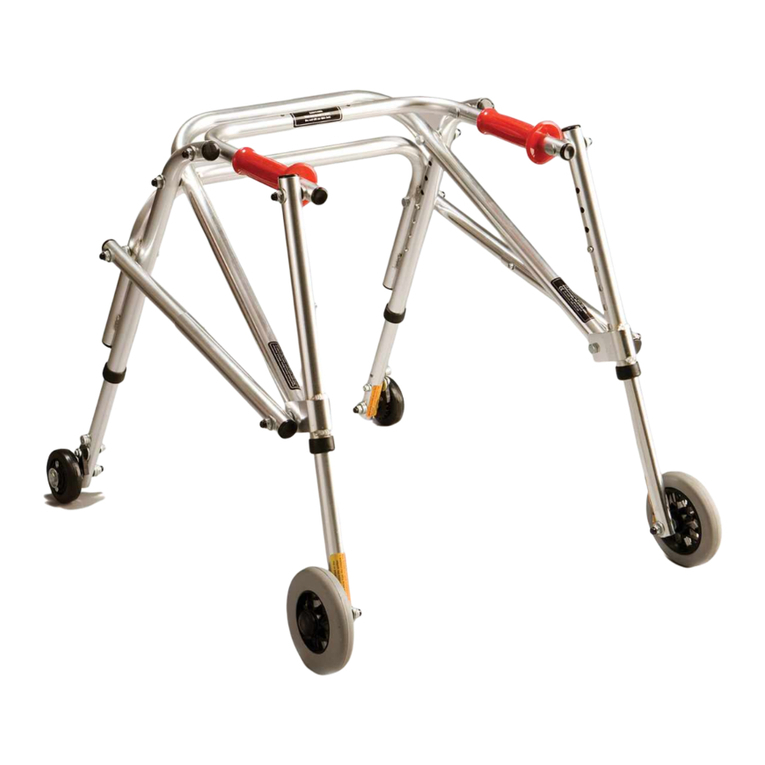
entire instructions. Please store the instructions for future
reference.
WALKER USE
The Kaye Posture Control Walker is designed as
a reverse or posterior walker, where the user faces away
from the rear bars and towards the open end of the
walker. These walkers are designed to facilitate postural
alignment, balance, and components of gait through the
following means (as compared to traditional, forward
walkers):
1. Support behind the user encourages a more upright
posture.
2. Handgrips beside the user encourage improved
upper extremity position.
3. Centering of the user within the walker and over his
own feet encourages the development of balance.
4. Rear horizontal bars encourage the user to step
forward as he moves the walker forward.
5. Pulling the walker helps eliminate the abnormal two-
footed stance when a user must stop and move the
walker further to their front.
6. Clinical evidence to support these assumptions can
be found on our website, www.kayeproducts.com.
SEAT USE
The fold-down seat should only be used while
the walker is stationary. The seat is designed for the user
to take a break from walking or standing. Do not use the
seat to replace a wheelchair, seating system, or stroller.
WHEEL DESIGNS
The two-wheeled design provides extra drag for
users who cannot yet manage a walker that rolls forward
as they shift their weight forward.
The four-wheeled designs help improve cadence,
velocity, energy use, and step and stride length. All four-
wheeled walkers have locking rear wheels to prevent
them from rolling backwards.
The swivel front wheels, if so equipped, allow the
user to turn without having to lift and reposition the
walker.
WALKER IDENTIFICATION, AND SIZE AND
WEIGHT LIMITS
The model number is on the warning label and
the yellow/orange leg label. (“H” or “-seat” denotes a fold-
down seat; “R” denotes four wheels; “S” denotes four
wheels with swivel front wheels; “X” denotes silent rear
wheels.)
The following chart lists height and weight limits
for each walker as follows:
Height Range: measured from the floor to top of the
grip. This should match the height from the floor to the
middle of the user’s buttocks.
MODEL HEIGHT RANGE MAX. WEIGHT
W5C,R,S,X A
(in.)
36-42
B
(cm)
91-107
C
(lbs.)
250
D
(kgs)
113
FOLDING AND UNFOLDING
To unfold the walker, pull the handgrip and rear
legs away from each other, and the walker should begin
to unfold. Continue to unfold the frame until the latch
snap buttons extend and lock as shown below.
Figure 1: Snap Button Diagram
To fold the walker, face it from the open end,
depress the latch snap buttons, tilt the walker so that it
rests on its rear legs only, and push the front legs
towards the rear legs.
LEG INSTALLATION
Some walkers are shipped with the legs
removed. Install the legs as follows:
1. The front legs have either swivel wheels or straight
wheels that rotate forward and backward. Install the front
leg wheel with the orange sticker into the front, left side
of the frame. Install the other front leg wheel into the
front, right side of the frame. See figure 7.
2. Two wheeled walkers: Install the rear legs with tips
so that the bend in the leg points the tip towards the front
of the walker (the open end).
Figure 2: Rear Leg with Tips
W5C Walker
2.20.2006
Pg2
Four wheeled walkers: The rear legs with wheels have
wheels that rotate in only one direction. Install the rear
leg with the orange sticker into the rear, left side of the
























